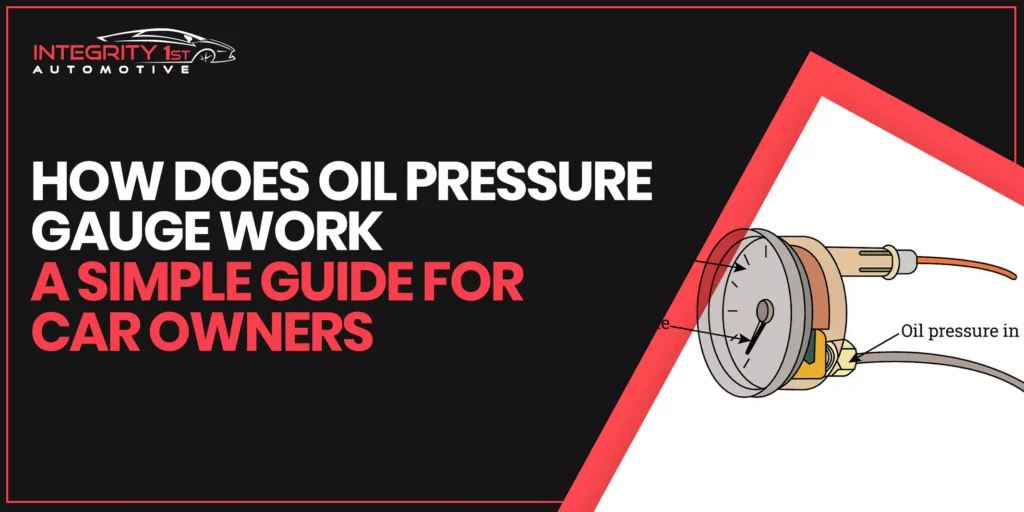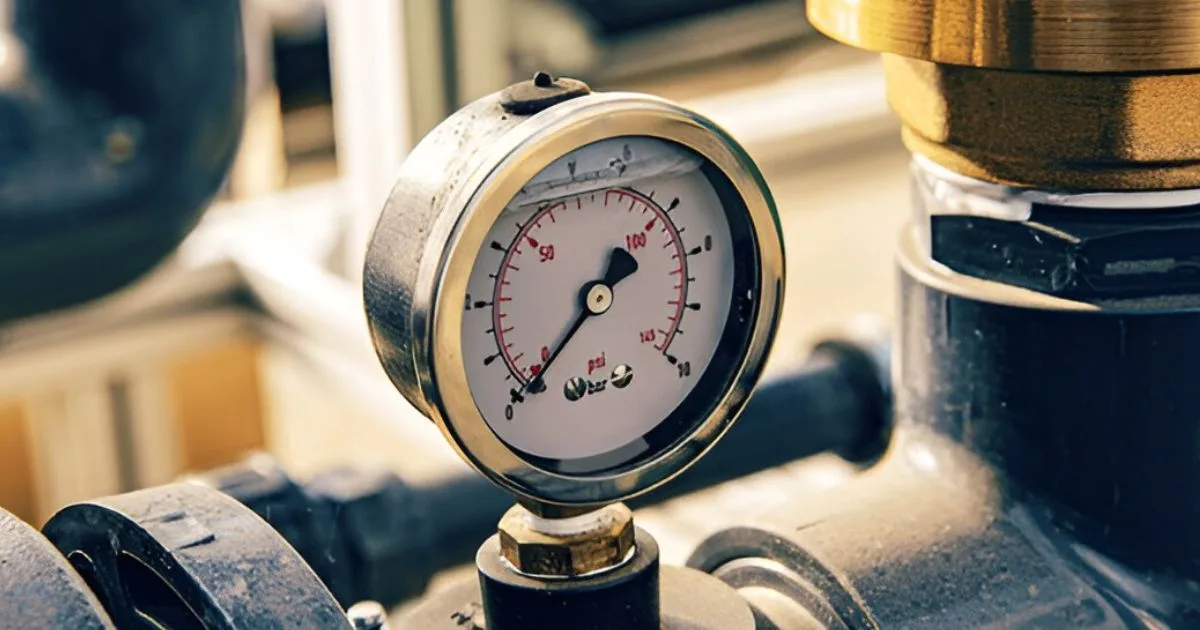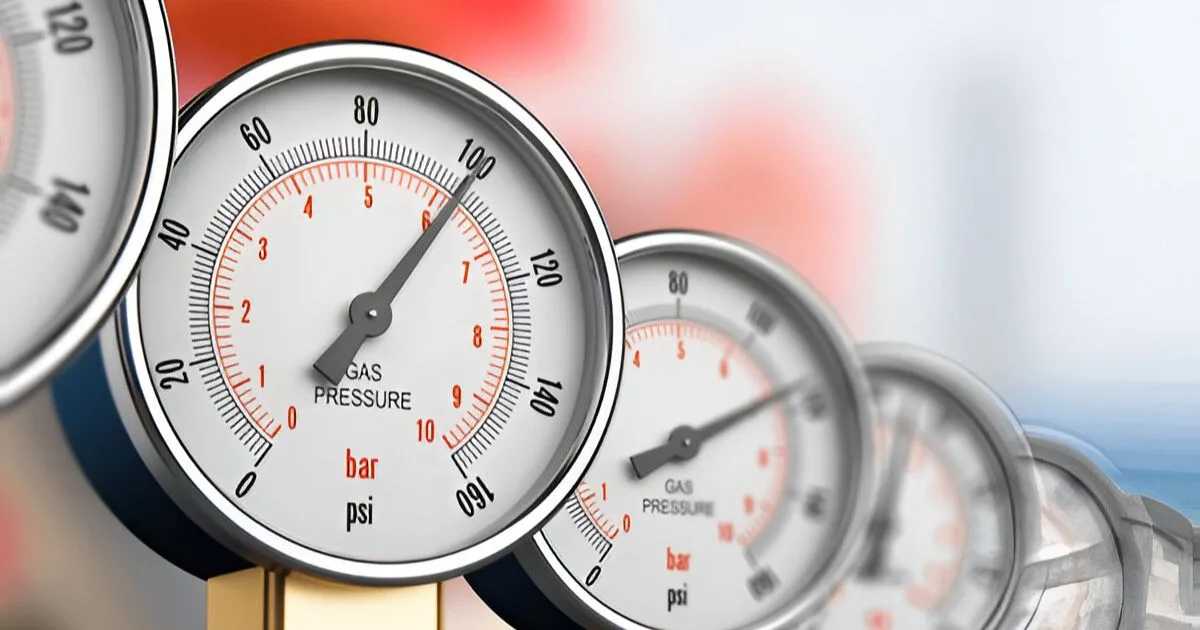
An oil pressure gauge indicates your engine's oil pressure, ensuring the engine is lubricated properly. It's essential for preventing engine damage and maintaining vehicle health.
Understanding your car's oil pressure gauge is critical for safeguarding your engine and ensuring peak performance.
This small yet crucial instrument on your dashboard alerts you if the oil pressure falls below or rises above the recommended level.
Keeping an eye on this gauge can be the difference between a smoothly running engine and costly repairs.
Car owners must familiarize themselves with the normal operating range of their vehicle’s oil pressure gauge to detect potential issues early.
Regular monitoring helps you maintain your engine in optimal condition and avoid the stress of unexpected breakdowns.
With a grasp of its importance, you can take proactive steps to maintain your vehicle's longevity and reliability.

Introduction To Oil Pressure Gauges
An oil pressure gauge is a critical component in any vehicle.
It serves as an early warning system for your engine's well-being.
Understanding this small but mighty device can save you from costly repairs.
What They Measure
Oil pressure gauges track the lubricant force within the engine.
This reading is crucial. It ensures the engine's moving parts stay healthy and operational.
Without proper pressure, engines fail.
Why They Matter
- Engine Protection: Gauges alert to low pressure, preventing damage.
- Performance: Optimal pressure equals peak engine performance.
- Longevity: Regular monitoring contributes to engine lifespan.
 Types Of Oil Pressure Gauges
Types Of Oil Pressure Gauges
Types Of Oil Pressure Gauges
Understanding the Types of Oil Pressure Gauges is crucial for every car owner. These gauges monitor your car's engine oil pressure.
This helps prevent engine damage. Let's explore the two main types: Mechanical and Electrical.
Mechanical Vs. Electrical
Mechanical and Electrical gauges differ in how they measure oil pressure.
- Mechanical gauges use a tube. This tube sends oil from the engine to the gauge. You see the pressure directly.
- Electrical gauges, on the other hand, use a sensor. This sensor is in the engine. It sends signals to the gauge. This shows the oil pressure.
Both types have their pros and cons. Mechanical gauges are often more accurate. Yet, they can be harder to install. Electrical gauges are easier to install. But, they may not be as precise.
Choosing The Right One
Choosing the right oil pressure gauge depends on your needs.
| Type | Pros | Cons |
|---|---|---|
| Mechanical | More accurate, Direct measurement | Harder to install, Potential for leaks |
| Electrical | Easier to install, No direct oil line | Less accurate, Requires sensor |
Think about what you value more. Do you want accuracy or ease of installation? Your answer will guide your choice.
Reading The Gauge Correctly
Understanding your car's oil pressure gauge is crucial. It helps keep your engine healthy.
A correct reading ensures your car runs smoothly. Let's learn to read the gauge properly.
Normal Oil Pressure Range
The oil pressure gauge measures how well oil circulates in your engine. Normal oil pressure varies between cars. Yet, most cars operate within a certain range.
This range is often between 20 to 30 psi at idle and up to 60 psi at higher speeds.
Check your car's manual for the exact range. A steady needle within this range means your engine is in good shape.
Signs Of Trouble
It's vital to spot signs of trouble early. A gauge reading too high or too low signals a problem. Look out for:
- Low pressure - This could mean a leak or worn-out parts.
- High pressure - This might suggest a blockage or other issues.
- Fluctuating readings - This is a sign of potential engine trouble.
If you notice any of these signs, act quickly. Check your oil level and quality first. If problems persist, contact a mechanic.
Common Causes Of Oil Pressure Issues
Oil pressure is vital for engine health. It keeps moving parts lubricated. Without it, engines can fail.
Low Oil Level
Not enough oil in your car's system can cause low oil pressure. It's often from leaks or not filling up properly.
Check your oil level regularly. Look for puddles or spots under your car. They might indicate a leak.
Oil Viscosity And Quality
Oil thickness affects pressure. Thick oil moves slowly. It can cause low pressure in cold weather. Thin oil moves fast. It might not lubricate well. Always use the right oil for your car. Check your manual.
Old or dirty oil can clog and harm your engine. Change oil as advised. Use high-quality oil. It protects better and lasts longer.
Troubleshooting Oil Pressure Problems
Troubleshooting oil pressure problems is crucial for every car owner. Low oil pressure can lead to severe engine damage. Understanding how to spot and fix these issues is key.
Let's dive into simple checks you can do and when it's time to call a professional.
Simple Checks
Start with these easy steps to diagnose oil pressure problems:
- Check the oil level: Low oil level is a common cause. Use the dipstick to check.
- Inspect for leaks: Look under the car for any signs of oil on the ground.
- Examine the oil filter: A clogged filter can cause low pressure. Consider changing it.
- Assess oil quality: Dirty or wrong type of oil affects pressure. Change if needed.
When To Seek Professional Help
If simple checks don't solve the problem, seek expert advice. Here are signs you need a mechanic:
- Oil light stays on: This indicates a persistent low pressure issue.
- Noise from the engine: A knocking sound can mean serious damage.
- High oil temperature: If the gauge shows high temperature, it's time for a check-up.
Professionals can perform advanced diagnostics and repairs. They ensure your car stays safe and reliable.
 Maintenance Tips For Optimal Performance
Maintenance Tips For Optimal Performance
Maintenance Tips For Optimal Performance
Maintaining your car's oil pressure gauge is crucial. It ensures your engine runs smoothly. Follow these tips for top performance.
Regular Oil Changes
Timely oil changes keep the gauge accurate. They protect your engine too.
- Consult your manual for the right schedule.
- Use quality oil recommended by the manufacturer.
- Check for oil leaks after changes.
Remember, fresh oil maintains consistent pressure and gauge readings.
Monitoring Gauge Readings
Regularly watch your gauge for unusual readings. This detects issues early.
| Reading | Meaning | Action |
|---|---|---|
| High | Possible blockage | Check filter, oil quality |
| Low | Potential leak or wear | Inspect for leaks, wear |
| Fluctuating | Unstable oil flow | Seek professional help |
Address any abnormalities promptly to prevent engine damage.
Impact Of Oil Pressure On Engine Health
The health of your car's engine heavily relies on oil pressure. Oil pressure ensures moving parts stay lubricated. Without proper lubrication, parts wear down quickly.
This leads to severe engine damage. Monitoring oil pressure is crucial for engine longevity.
Preventing Engine Damage
Oil pressure safeguards against friction. Friction generates heat. Heat harms engines. An oil pressure gauge alerts you to low pressure. Low pressure means inadequate lubrication.
Immediate action can prevent costly repairs. Here's why maintaining oil pressure is key:
- Protects engine parts from wear
- Keeps engine temperatures stable
- Helps to detect oil leaks early
- Ensures efficient engine performance
Extending Vehicle Lifespan
Your vehicle's lifespan extends with proper maintenance. Oil pressure is a maintenance pillar. Consistent pressure equals a happy engine.
A happy engine equals a longer-lasting vehicle. Use these tips to extend your vehicle's life:
- Check oil pressure regularly
- Change oil and filter as recommended
- Address pressure drops immediately
Remember, oil is the engine's lifeblood. Keep it pumping right, keep your car running long.
 Faqs On Oil Pressure Gauges
Faqs On Oil Pressure Gauges
Faqs On Oil Pressure Gauges
Understanding your car's oil pressure gauge is crucial for maintaining engine health. Here are answers to common questions car owners ask.
Manual Vs. Dashboard Gauges
Manual gauges offer direct mechanical readings.
Dashboard gauges provide electronic feedback.
Both types alert drivers to pressure changes in the engine.
Manual gauges require you to check them physically.
Dashboard gauges can be monitored while driving.
How To Install An Aftermarket Gauge
- Choose the right gauge for your vehicle's needs.
- Gather tools such as wrenches, screwdrivers, and Teflon tape.
- Disconnect the battery to ensure safety.
- Remove the old gauge, if applicable.
- Find the oil pressure sender and remove it.
- Install the new sender with Teflon tape for a secure fit.
- Route the wiring from the sender to the gauge.
- Mount the gauge securely on the dashboard or console.
- Connect the wiring to the appropriate terminals.
- Reconnect the battery and test the gauge.
Professional installation is recommended for accurate results.
Frequently Asked Questions
What Is An Oil Pressure Gauge?
An oil pressure gauge is a device in your car that monitors the oil pressure in the engine, ensuring it's operating within safe levels.
Why Is Oil Pressure Important?
Proper oil pressure maintains engine lubrication, preventing overheating and potential engine damage.
How To Check Oil Pressure?
To check oil pressure, observe the gauge on your dashboard while the engine is running; a normal range is typically between 20-30 psi.
Signs Of Low Oil Pressure?
Warning signs include the oil pressure warning light, strange noises from the engine, and a drop in gauge reading.
Related Post
What Causes a Car Odometer to Stop Working: Key Reasons
What Causes a Car Speedometer to Stop Working: Key Reasons
How to Use a Digital Car Manometer: Expert Tips
How Does a Car Ammeter Work: Essential Insights
Why Does My Car Say ‘Tire Pressure Gauge Problem’? Pro Tips
Step-By-Step: Voltmeter Mastery for Car Battery Checks
Conclusion
Understanding your car's oil pressure gauge is crucial for vehicle health and safety.
Regular checks can prevent engine damage and costly repairs.
Embrace this knowledge as a key aspect of responsible car ownership.
Stay informed, stay safe, and drive with confidence, knowing your engine is under vigilant watch.
Disclosure
Some links may be affiliate links. That means we may earn a small commission at no extra cost to you.